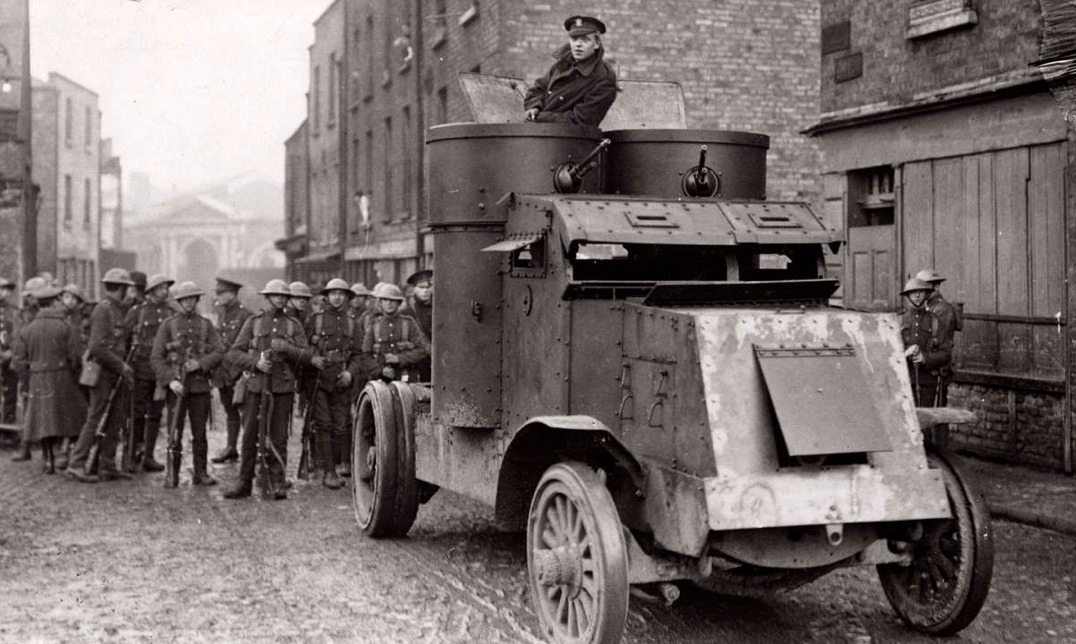
In the War of Independence, people were abducted, executed and secretly buried, not by the British, but by the Irish Republican Army. A new TV3 series, In The Name Of The Republic, investigates the ‘disappeared’ of 1919 to 1921, as Eunan O’Halpin, professor of contemporary Irish history at Trinity College, attempts to identify them and tells their shocking stories. Of these civilians killed by the IRA, O’Halpin asks “were they spies, were they informers? Some were, some were not.” Buried in unmarked graves or weighed down and dumped into lakes and rivers, they are the forgotten victims of Ireland’s struggle for independence. In his decade of research, Professor O’Halpin discovered executions carried out upon the slightest of evidence. “These deaths cast a dark shadow over the struggle for independence,” he says. With the centenaries of major moments in Irish history looming — 1916, partition, independence and the Civil War — it is timely this darker passage is being revealed.
In the first instalment of the TV series, O’Halpin travelled to Laois to investigate the rumour that the bodies of executed men were dumped on a farm during the War of Independence. Using modern technology and the expertise of an archaeological firm to find evidence of human burials, he tries to establish the identities of the alleged victims.
The only clue he had to work with was a claim that the executed men were from north Tipperary. O’Halpin’s journey took him to the National Archives, where files provided evidence of abduction, executions, and burials. The programme also told the story of Major Compton-Smith, who had commanded the 10th Royal Welch Fusiliers during the First World War. After the war, he served with the 2nd Royal Welch Fusiliers in Ireland, where he was taken hostage in 1921, before being shot in retaliation for the execution of IRA prisoners. The body was returned, prompting O’Halpin to ask: “Why would the body of an English soldier be returned, but not the bodies of so many Irish people?” Delving deeper into the disappearances was about more than just spies and informants, but about covering up local leadership incompetence and settling old scores.
One of the few bodies recovered from this period was that of Captain Noel Lemass, older brother of the future Taoiseach. One of the last killed during the Civil War, he was abducted in 1923, only for his body to be discovered by chance, four months later, at a remote spot in the Dublin mountains. “Sean Lemass knew his brother’s killers, but never sought revenge,” O’Halpin said.
O’Halpin grew up in a home where stories from the Civil War were knitted into the family history. Both his grandfathers were senior officers in the IRA and his grandmother, Katie Barry, was a leading anti-Treaty activist. Two of his great uncles were killed during the conflict — Kevin Barry, hanged in Dublin in 1920, and Paddy Moloney, shot in Tipperary in 1921. During the years 1920 and 1921, 200 people were abducted, executed and their bodies disposed of — including 180 civilians, as well as policemen and soldiers. “All sides engaged in acts contrary to the conventions of war,” he said. “For the IRA, one of the lasting legacies was that of the disappeared.”
Many files in the National Archives are still not available to public scrutiny, almost a hundred years later. “Many of the Department of Defence files are still closed. It is surely time that we knew what these contain,” O’Halpin said. “The families of the dead, and the public generally, have a right to know how, and why, these people died.”
In the second programme, which screens next Monday, O’Halpin travels to Cork, the county where the War of Independence was most fiercely fought. He uncovers the disturbing story of Martin Corry, a 40-year Fianna Fáil TD, who had a graveyard on his farm for victims he, and associates, executed during, and after, the Troubles. O’Halpin also delves into the activities of the No.1 Brigade and the killing of Lord Mayor Thomas MacCurtain by a Crown murder squad, and the series of revenge deaths that followed, which did not stop until the Civil War ended.
Most chilling is O’Halpin’s visit to an old cemetery outside the village of Knockraha, where the IRA used a medieval vault, nicknamed Sing Sing, as a holding cell. Most of those held there were later marched to a nearby bog, known as The Rea, where they were shot and buried. O’Halpin estimates there could be anywhere from 30 to 90 people buried in the bog.
Tuesday 19 March 2013
http://www.irishexaminer.com/lifestyle/war-of-independence-disappeared-recalled-225827.html



















